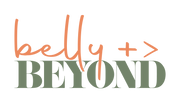Choosing a mattress for your baby
When setting up your nursery there can be needs and wants and getting a suitable mattress falls into the needs category. Your little one will use it a lot as they spend most of the day and night sleeping when they are an infant especially, so understanding they have a safe mattress is important.
Plunket advocates for babies to have their own baby bed in the same room as their parent or caregiver for the first six months. Then it is also recommended for their mattress to be firm and flat as past studies have linked overly soft mattresses with suffocation risk. The concern is if a baby accidentally rolls over their nose could be obscured for breathing otherwise. This also means any mattress protector you put on your mattress should be tight and well-fitting to keep the firm and flat sleeping area for your baby.
Many parents choose to use a Bassinet or Co-Sleeper beside their bed for those first six months. Then transition their little one to a Cot in a different room as they get older.
Safety Standards:
There is a voluntary standard for infant sleep surfaces in New Zealand which covers bassinet, co-sleeper’s and Cots. This tests for firmness of the mattress (AS/NZS 8811.1:2013), however not all mattresses sold in New Zealand will pass this standard as it is only voluntary. You can usually confirm with the store or manufacturer if the mattress passes the standard. This is why some mattress, especially for portacots, can be quite firm when they come with the baby’s bed. Most portacot manufacturing instructions state that you should not add a second mattress or use one that is not theirs.
There is a safety standard for all Cots sold in New Zealand (AS/NZS 2172:2003), but not for other bed types like bassinets, co-sleepers or portacots.
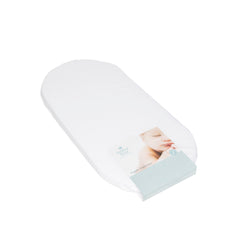
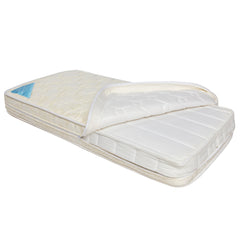
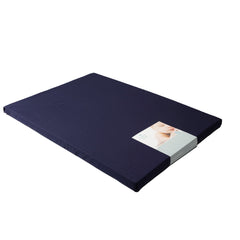
Mattress fit:
It is recommended to have a well-fitting mattress to your young ones sleeping area which means there is no gaps between the inner wall/edge and the mattress. Having less than 20mm gap between the mattress and the side of the baby’s bed is suggested. It is also recommended to have a new mattress for a new baby. However, be aware there are different sizes for bassinets, co-sleepers or Cot as New Zealand tends to import European, Australian and USA versions. If you have a second-hand bed for your baby you may not be able to find the correct size available for purchase, so you will need to get a custom made mattress.
Mattress thickness:
Bassinet and co-sleeper mattresses tend to be thinner than cot mattresses as when you little one are smaller and lighter you do not need as thick a mattress. Thickness may also vary depending on the material used ie. Foam or Latex are common mattress materials for bassinets and Co-sleepers, which could range from 3.5cm to 5cm. However, cot mattresses tend to be Innerspring which are naturally thicker as well due to their design. Some Cots do have specified mattresses thicknesses in their instructions which is good to follow but otherwise cot mattresses tend to range from 10-15cm thick.
Mattress Material:
As long as the mattress is firm enough and well-fitting the material does not otherwise affect the safety of the mattress. Most bassinet, co-sleeper and portacot mattress are made from foam. A more premium option are latex mattresses which are natural and hypo allergenic. These materials are all light weight and do need to be aired regularly. Innerspring is the other commonly used material but are generally only available in cot sizes and are a longer lasting material as they hold their shape better in the long term.

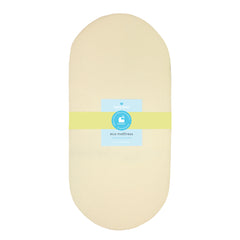
If you need a custom mattress for your bassinet, co-sleeper, protacot or Cot we do supply this service so reach out to our team for a quote.
Other recommendations:
- Having a well fitted mattress protector means you can protect your mattress and is easier to wash than trying to clean a mattress. You can also get mattress protectors that limit VOC’s (volatile organic compounds) from your mattress. Never wrap them in plastic or any other unbreathable material.
- Plunket & Red Nose recommends having a clear sleeping space for your little one. Which means no pillows, cushions, loose blankets/bedding, toys, teething necklaces etc. If you are using blankets to keep them warm, make sure they are tucked tight under the mattress and position your baby at the foot of their sleeping place to stop them slipping down under the covers.
- Avoid putting sheepskin in as a part of your baby’s bedding as it collects dust mites easily and then stop your little one from a flat surface area.
- If your mattress comes vacuum packed make sure they are left on a flat surface for several days to be fully expanded.
Resources:
Plunket – Making your childs bedroom safe - https://www.plunket.org.nz/caring-for-your-child/safe-sleep/making-your-childs-bedroom-safe/
Red Nose Australia – What is a safe Mattress - https://rednose.org.au/article/what-is-a-safe-mattress
Choice Australia – Cot Mattresses - https://www.choice.com.au/babies-and-kids/baby-furniture/cots/buying-guides/cot-mattresses
